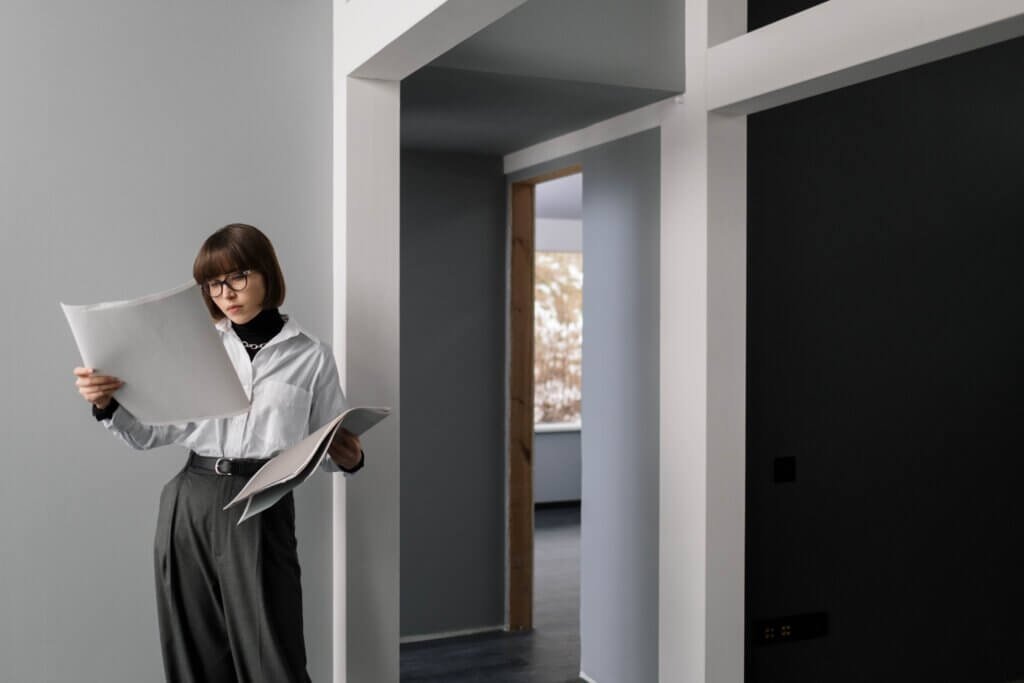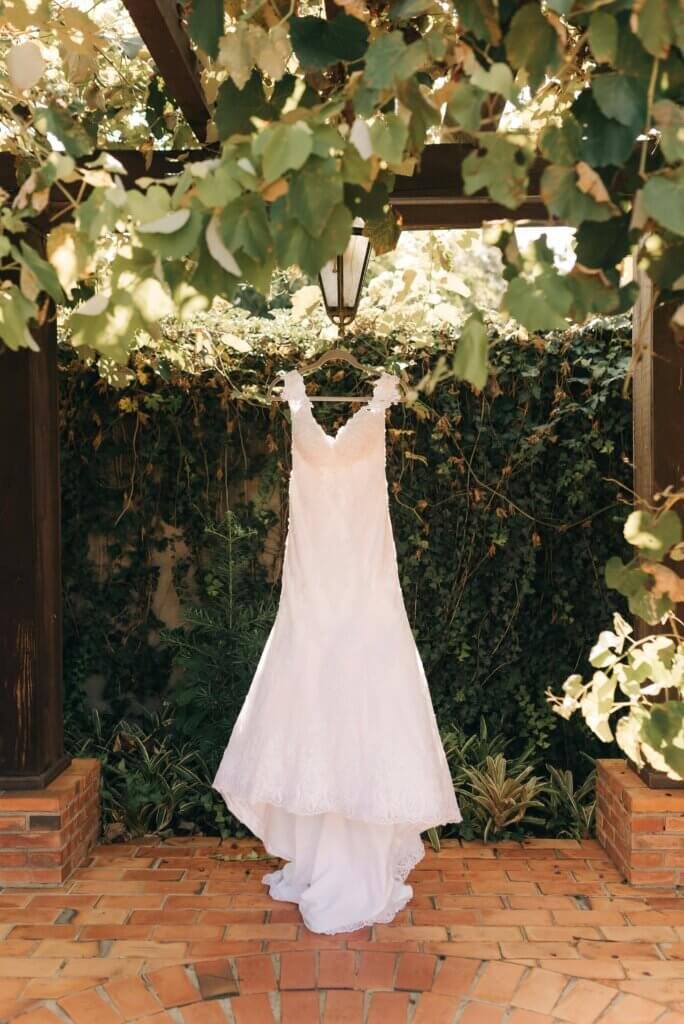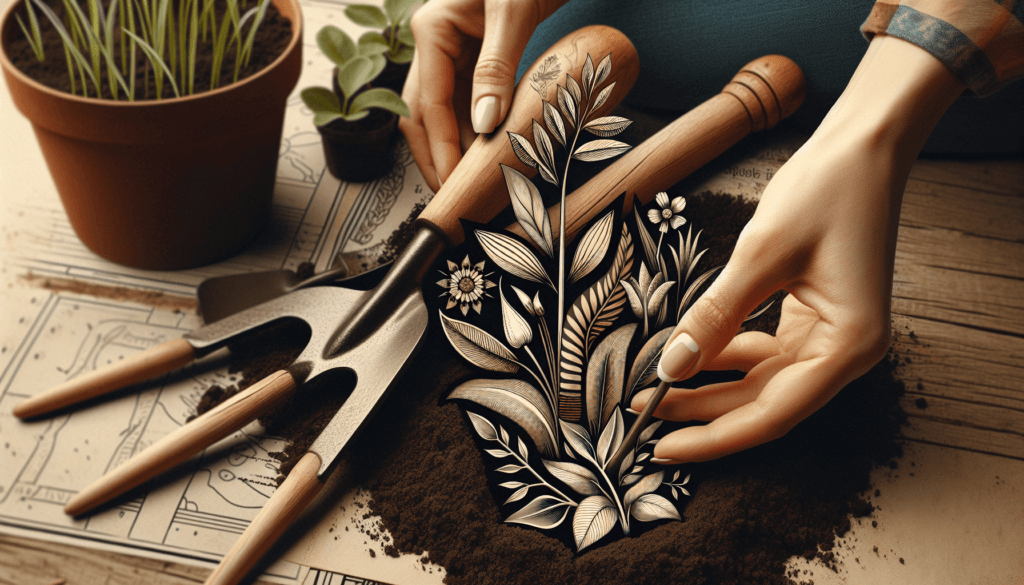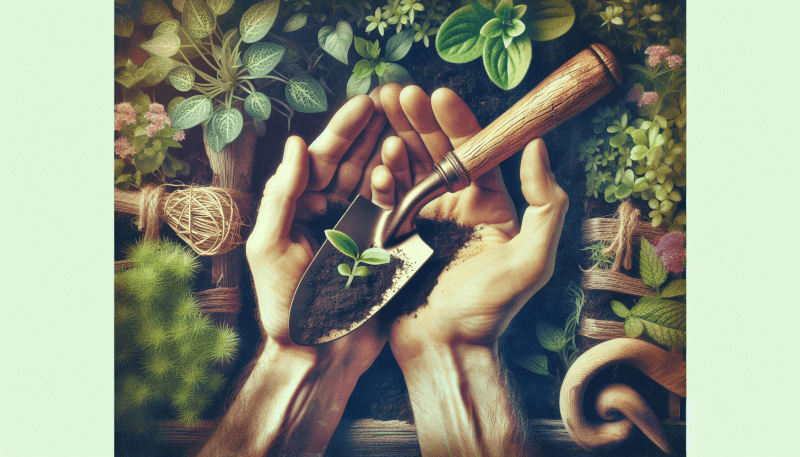Are you ready to unleash your inner green thumb? Look no further! This article presents a comprehensive guide to 10 easy DIY garden projects specifically designed for beginners. Whether you have limited outdoor space or a sprawling garden, these projects are perfect for anyone looking to add a touch of nature to their surroundings. From creating a vertical garden to building a birdhouse, this article is packed with simple and enjoyable projects that will have you transforming your outdoor space in no time. So grab your gardening gloves and get ready to embark on a journey of creativity and nature!

Creative Container Gardens
Vertical Garden with Repurposed Containers
Are you looking for a creative way to maximize your garden space? Look no further than a vertical garden with repurposed containers! This is a fantastic project for beginners as it requires minimal materials and is simple to set up. Start by gathering various containers such as old buckets, shoe organizers, or even plastic bottles. Then, attach these containers to a wall, fence, or sturdy structure using hooks or screws. Fill each container with nutrient-rich soil and plant your favorite herbs, flowers, or vegetables. Not only will this vertical garden add a unique and artistic touch to your outdoor space, but it will also allow you to grow a wide variety of plants, making the most of your limited garden space.
Tiered Herb Garden with Pots
Fresh herbs right at your fingertips? Yes, please! A tiered herb garden with pots is an ideal project for beginners who want to grow their own herbs. Start by selecting a sturdy tiered plant stand or ladder shelves that can accommodate several pots. Next, choose a variety of herbs that you love the taste and aroma of, such as basil, rosemary, thyme, or mint. Plant each herb in individual pots, ensuring they have proper drainage. Arrange the pots on the tiered stand, placing the taller herbs in the back and the smaller ones in the front. You’ll not only have a beautiful herb garden but also a convenient and functional addition to your outdoor space.
Hanging Basket Garden
If you’re short on outdoor space or want to add a touch of greenery to your balcony or porch, a hanging basket garden is the perfect solution. This DIY project is great for beginners as it requires minimal materials and can be completed in a short amount of time. Start by selecting sturdy and lightweight baskets that can be easily hung. Line each basket with coco fiber or moss to retain moisture. Fill the baskets with a quality potting mix and select a variety of plants that thrive in hanging baskets, such as trailing petunias, fuchsias, or ivy. Hang the baskets in a sunny spot and be prepared to enjoy a stunning display of colorful blooms throughout the season.
Raised Bed Gardens
Simple Raised Bed with Wood
If you’ve always wanted to grow your own vegetables but struggled with poor soil quality, a simple raised bed with wood is a fantastic beginner-friendly project. This DIY raised bed can be built using basic materials and tools, making it an excellent option for gardeners of all skill levels. Begin by selecting the desired dimensions for your raised bed and gather untreated lumber boards. Cut the boards to the appropriate lengths and construct a rectangular frame, securing the corners with screws or nails. Place the frame in your desired location, ensuring it’s level and well-supported. Fill the bed with nutrient-rich soil and start planting your favorite vegetables, knowing that they’ll have optimal growing conditions and ample drainage.
Cinder Block Raised Bed
Cinder blocks aren’t just for construction projects, they can also be a versatile material for creating a raised bed garden. This DIY project is perfect for beginners as it requires minimal tools and materials. Start by selecting a sunny location for your raised bed and lay out the desired dimensions using cinder blocks. Arrange the blocks in a rectangular shape, ensuring they’re level and stable. Once the blocks are in place, fill the bed with a mixture of quality soil and compost. Get ready to plant your favorite vegetables, herbs, or flowers and watch your garden flourish within the sturdy and low-maintenance cinder block raised bed.
Raised Bed with Recycled Materials
If you’re passionate about sustainability and want to reduce waste, creating a raised bed with recycled materials is the perfect project for you. This DIY raised bed is not only beginner-friendly but also environmentally friendly. Start by sourcing reclaimed or recycled materials such as old pallets, railway sleepers, or even discarded bricks. Plan and construct a rectangular or square frame using these materials, ensuring it’s sturdy and secure. Place your raised bed in a sunny spot and fill it with a mixture of soil and compost. Whether you choose to grow vegetables, flowers, or herbs, you can take pride in knowing that your garden is not only beautiful but also eco-conscious.

DIY Herb Gardens
Window Box Herb Garden
Transform your windowsills into a lush and aromatic herb garden with this DIY project. A window box herb garden is ideal for beginners as it requires minimal space and can be easily accessed for care and harvesting. Start by selecting a window box that fits snugly on your windowsill and has proper drainage. Fill the box with high-quality potting mix, ensuring it’s evenly distributed. Choose your favorite herbs, such as parsley, basil, or chives, and plant them in the box, spacing them appropriately. Place the window box in a sunny spot, ensuring the herbs receive adequate sunlight. Before you know it, you’ll have a lovely and convenient herb garden right outside your window.
Pallet Herb Garden
Do you have a discarded pallet lying around? Don’t let it go to waste! Repurpose it into a charming and functional herb garden. This project is great for beginners as it’s affordable, easy to set up, and requires minimal tools. Start by selecting a pallet that’s in good condition and has been treated or heat-treated. Remove any loose or protruding nails, ensuring the pallet is safe to work with. Next, attach a landscape fabric or weed mat to the back and bottom of the pallet to prevent soil from falling out. Fill each opening with potting soil, leaving enough space for your chosen herbs. Plant each herb in its designated space, ensuring they’re well-watered. Lean the pallet against a wall or fence in a sunny area and watch your vertical herb garden thrive.
Indoor Mason Jar Herb Garden
Want to have fresh herbs growing indoors all year round? An indoor mason jar herb garden is the solution for you. This DIY project is perfect for beginners as it requires minimal materials and can be placed anywhere in your home. Start by gathering a few mason jars, ensuring they have proper drainage holes at the bottom. Fill each jar with potting mix, leaving enough space for the herb roots. Choose your favorite herbs, such as parsley, cilantro, or thyme, and plant them in the jars. Place the jars on a sunny windowsill or under a grow light, ensuring they receive adequate sunlight. Don’t forget to water your herbs regularly and enjoy the convenience of having fresh herbs available for your culinary creations.
DIY Flower Gardens
Colorful Tire Planter
Give your garden a touch of whimsy with a colorful tire planter. This DIY project is perfect for beginners who want to add a unique and eye-catching element to their flower garden. Start by sourcing used tires in different sizes and colors. Clean the tires thoroughly and let them dry. Next, paint the tires with vibrant, weather-resistant paint, allowing each coat to dry before adding another. Once the paint is dry, stack the tires on top of each other, ensuring they’re stable. Fill each tire with a high-quality potting mix and plant your favorite flowers. Whether you choose to showcase delicate petunias or bold marigolds, your colorful tire planter will certainly become the focal point of your garden.
Wine Barrel Flower Bed
If you’re looking to add a rustic charm to your garden, a wine barrel flower bed is the perfect choice. This DIY project for beginners allows you to repurpose old wine barrels and turn them into beautiful planters. Start by sourcing used wine barrels, ensuring they’re clean and in good condition. If the barrel has a hole in the bottom, cover it with a piece of landscape fabric or weed mat to retain soil. Fill the barrel with a mixture of potting soil and compost, creating a nutrient-rich environment for your flowers. Plant a variety of colorful annuals or perennials, ensuring they’re well-watered. Place the wine barrel flower bed in a sunny spot and get ready to enjoy a delightful burst of color in your garden.
Repurposed Wheelbarrow Garden
Do you have an old and worn-out wheelbarrow that’s taking up space in your shed or garage? Give it a new life as a repurposed wheelbarrow garden! This beginner-friendly DIY project allows you to showcase your creativity while adding a whimsical touch to your outdoor space. Start by cleaning the wheelbarrow and adding drainage holes to the bottom if necessary. Fill the wheelbarrow with high-quality potting mix, ensuring it’s evenly distributed. Choose a variety of flowers that complement each other in terms of height, color, and texture, and plant them in the wheelbarrow. Place your repurposed wheelbarrow garden in a sunny spot and watch as it becomes a charming focal point of your garden.

Vertical Gardens
Pallet Vertical Garden
Vertical gardens are an excellent option for gardeners with limited space. A pallet vertical garden is a fantastic DIY project for beginners as it’s affordable, customizable, and easy to set up. Start by sourcing a wooden pallet that’s in good condition and has been heat-treated. Stand the pallet vertically, ensuring it’s stable and secure. Attach landscape fabric or weed mat to the back of the pallet to prevent soil from falling out. Fill each opening with potting soil, leaving enough space for your chosen plants. Get creative with your plant choices, such as succulents, herbs, or trailing flowers. Lean the pallet against a wall or fence in a sunny area and enjoy the beauty of your vertical garden.
Wall-Mounted Trellis Planter
Looking to add a touch of elegance to your garden or outdoor space? A wall-mounted trellis planter is the perfect solution. This DIY project is great for beginners as it combines the beauty of climbing plants with the functionality of a planter. Start by selecting a sturdy trellis that can be securely mounted on a wall or fence. Attach a planter box to the trellis, ensuring it’s well-supported and easy to remove for maintenance. Fill the planter with potting mix and choose climbing plants such as jasmine, morning glory, or clematis. Mount the trellis planter in a sunny spot and watch as the climbing plants create a stunning display against your chosen background.
Hanging Gutter Garden
Have you ever considered using gutters as a unique and practical way to create a vertical garden? A hanging gutter garden is a fantastic DIY project for beginners as it requires minimal materials and can be easily customized to fit your space. Start by sourcing sturdy, aluminum gutters. Cut the gutters into desired lengths, ensuring they’ll fit in your chosen hanging location. Attach end caps to each gutter to prevent soil from falling out. Drill drainage holes along the bottom of each gutter to allow excess water to escape. Fill each gutter with potting mix and choose a variety of plants, such as succulents or trailing flowers. Hang the gutters using hooks or brackets, ensuring they’re secure and evenly spaced. Enjoy the beauty of your hanging gutter garden and the convenience of having fresh herbs or vibrant flowers within arm’s reach.
DIY Bird Feeders and Baths
Bottle Bird Feeder
Calling all bird lovers! Making a bottle bird feeder is a fun and beginner-friendly DIY project that will attract various bird species to your garden. Start by gathering a clean and empty plastic bottle with a screw-on lid. Using a sharp knife or scissors, cut a small hole near the bottom of the bottle, ensuring it’s large enough for birds to access the seeds. Make additional small holes at the base to allow rainwater to drain. Fill the bottle with birdseed and screw the lid back on. Attach a wire or string to the top of the bottle and hang it from a sturdy tree branch or hook. Sit back, relax, and watch as colorful birds flock to your garden to enjoy a feast.
Teacup Bird Feeder
If you’re looking for a charming and unique way to feed your feathered friends, a teacup bird feeder is a delightful DIY project for beginners. Start by finding a teacup and saucer set that you no longer use or visit a thrift store for inexpensive options. Using strong adhesive or a drill, attach the teacup to the center of the saucer, ensuring it’s secure and level. Fill the teacup with birdseed and place the teacup bird feeder in a sunny spot or hang it from a sturdy tree branch or hook. Sit back, have a cup of tea, and enjoy watching the birds dine in style.
DIY Birdbath
Create a welcoming oasis for birds to cool off and drink with a DIY birdbath. This beginner-friendly project is easy to set up and will attract both local and migratory birds to your garden. Start by selecting a shallow basin or dish that can withstand outdoor conditions, such as a terracotta saucer or a repurposed cake pan. Choose a sturdy base for your birdbath, such as a short garden pedestal or a stack of stones. Place the basin on the base and ensure it’s stable and level. Fill the basin with water, ensuring it’s shallow enough for birds to bathe without fear of drowning. Add some decorative elements like stones or floating flowers to enhance the visual appeal of your birdbath. Sit back and enjoy the delightful sight of birds frolicking and splashing in their newfound oasis.

Decorative Garden Accents
DIY Garden Stepping Stones
Make your garden walkways come to life with DIY garden stepping stones. This beginner-friendly project allows you to personalize your garden path using various materials and designs. Start by selecting a mold for your stepping stones, such as plastic plant trays or disposable cake pans. Mix quick-setting concrete according to the instructions on the packaging, ensuring it’s a thick but pourable consistency. Pour the concrete mixture into the molds, smoothing the surface with a trowel. Add decorative elements such as colored glass gems, mosaic tiles, or handprints if desired. Let the stepping stones cure for a few days before removing them from the molds and placing them in your garden. Take each step with pride as you walk along your beautifully adorned garden path.
Garden Rock Markers
Adding rock markers to your garden is not only practical but also adds a touch of natural beauty. This DIY project is perfect for beginners as it requires minimal materials and creativity. Start by collecting smooth rocks of various shapes and sizes from your garden or a nearby beach. Clean the rocks thoroughly and let them dry. Using weather-resistant paint or a permanent marker, write the names or symbols of your favorite plants, herbs, or flowers on the rocks. Place the rock markers strategically throughout your garden, ensuring they’re easily visible and won’t get displaced. You’ll not only have a visually appealing garden but also a handy reference when it comes to plant identification.
Whimsical Garden Signs
Add a touch of whimsy and personality to your garden with DIY whimsical garden signs. This project is perfect for beginners as it allows you to showcase your creativity and personalize your outdoor space. Start by selecting wooden planks or repurposed fence panels as the base for your signs. Paint the background in your chosen color or use weather-resistant outdoor paint. Once the background is dry, let your imagination soar as you paint or stencil fun sayings, quotes, or images on the signs. Attach the signs to posts, hang them from trees, or mount them on garden walls or fences. Your whimsical garden signs will not only bring a smile to your face but also serve as a conversation starter for visitors.
DIY Vegetable Gardens
Container Vegetable Garden
Don’t let a lack of garden space prevent you from growing your own vegetables. A container vegetable garden is a fantastic option for beginners as it allows you to grow your favorite vegetables in pots, making them suitable for balconies, patios, or even small countertops. Start by selecting the appropriate containers for your vegetables, ensuring they have proper drainage holes. Fill the containers with a nutrient-rich potting mix and choose vegetables that are well-suited for containers, such as tomatoes, peppers, or lettuce. Place the containers in a sunny spot and water your vegetables regularly. With a container vegetable garden, you’ll not only enjoy the satisfaction of growing your own food but also the convenience of having fresh produce right at your fingertips.
Herb Spiral Garden
An herb spiral garden is not only visually stunning but also a practical way to grow a variety of herbs in a small space. This DIY project is great for beginners as it combines functionality with aesthetics. Start by selecting a sunny location for your herb spiral garden, ensuring it’s easily accessible for watering and harvesting. Create a spiral-shaped mound using bricks, rocks, or wooden boards, ensuring it’s stable and well-defined. Fill the spiral with a mixture of quality soil and compost, creating different growing conditions for various herbs. Plant your chosen herbs, ensuring taller ones are placed towards the center, and smaller ones towards the outer edges. Water your herb spiral regularly and watch as it becomes a focal point in your garden, providing you with an abundant supply of fresh herbs.
Square Foot Garden
If you’re looking to maximize your vegetable garden’s productivity in a small space, the square foot garden method is the way to go. This beginner-friendly DIY project allows you to grow a variety of vegetables in a well-organized and efficient manner. Start by selecting a sunny location for your square foot garden and mark off a grid using string or wooden dividers. Each square within the grid will be allocated to a specific vegetable or herb. Fill each square with a mixture of quality soil and compost, ensuring it’s loose and well-draining. Plant your chosen vegetables, following the recommended spacing for each crop. Not only will a square foot garden save you time and energy when tending to your plants, but it will also provide you with a bountiful harvest.

Garden Furniture and Structures
DIY Pallet Bench
For an affordable and eco-friendly addition to your garden, a DIY pallet bench is an excellent choice. This project is perfect for beginners as it requires minimal tools and materials. Start by sourcing sturdy pallets that are in good condition and have been heat-treated. Disassemble the pallets and remove any protruding nails. Reassemble the pallets to create the desired size and shape for your bench, ensuring they’re secure and level. Sand down any rough edges and apply weather-resistant paint or varnish to protect the wood. Place your pallet bench in a shady spot and complement it with comfortable outdoor cushions or pillows. Sit back, relax, and enjoy the fruits of your labor in a cozy and sustainable seating area.
Garden Trellis
A garden trellis not only adds visual appeal to your garden but also provides support for climbing plants and helps maximize space. This DIY project is great for beginners as it can be customized to fit any garden size or style. Start by selecting the desired height and width for your garden trellis, ensuring it’s sturdy and durable. Use materials such as wooden stakes, bamboo poles, or metal pipe sections to create the frame. Attach lattice or wire mesh to the frame, providing a climbing surface for your plants. Set the garden trellis in a sunny spot and plant climbing vegetables or decorative vines near the base. As your plants grow, they’ll naturally find their way up the trellis, creating a stunning vertical display.
Garden Arbor
Create a picturesque entrance to your garden with a DIY garden arbor. This beginner-friendly project adds a touch of elegance and defines the entryway to your outdoor space. Start by selecting sturdy wooden posts and beams that can withstand outdoor conditions. Dig holes for the posts, ensuring they’re evenly spaced and level. Set the posts and secure them with concrete or compacted soil. Attach the beams to the top of the posts, creating an archway. Be creative with the design by adding decorative elements such as lattice panels or climbing plants. Plant fragrant climbers like jasmine or roses near the arbor, allowing them to intertwine and create a magical and inviting gateway to your garden.
DIY Water Features
Bamboo Water Fountain
Transform your outdoor space into a tranquil oasis with a DIY bamboo water fountain. This project is perfect for beginners as it requires minimal tools and materials. Start by sourcing a bamboo pole that’s at least six feet tall and has a diameter of two to three inches. Cut the bamboo at different lengths, ensuring they’re staggered to create a cascading effect. Drill holes near the top of each bamboo section, allowing water to flow from one section to another. Attach a water pump to the bottom bamboo section and secure it to a sturdy container or basin. Place rocks or pebbles in the basin to create a soothing sound as the water flows. Set the bamboo water fountain in a peaceful spot and let the sound of trickling water wash away your stress.
Terracotta Pot Fountain
Add a charming and soothing water feature to your garden with a DIY terracotta pot fountain. This beginner-friendly project is affordable and easily customizable to fit your garden style. Start by selecting various-sized terracotta pots, ensuring they have drainage holes. Stack the pots in a pleasing arrangement, with the largest pot at the bottom and gradually decreasing in size towards the top. Thread a water pump and tubing through the pots, ensuring they’re secure and concealed. Place the fountain in a large basin or directly on the ground, ensuring the water pump is fully submerged. Fill the basin with water and plug in the pump to enjoy the delightful sound and visual appeal of your terracotta pot fountain.
DIY Pond
Create a serene and natural focal point in your garden with a DIY pond. Although this project may require a bit more planning and effort, it can be accomplished by beginners with the right tools and materials. Start by selecting a suitable location for your pond, ensuring it has adequate sunlight and is away from large trees or heavily shaded areas. Dig a hole of the desired size and shape, ensuring it’s at least two feet deep to accommodate plants and fish. Line the hole with an EPDM or PVC pond liner, ensuring it’s secure and free of wrinkles. Fill the pond with water, adding rocks and plants to create a natural and visually appealing setting. Sit back and enjoy the tranquility and beauty of your own backyard oasis.
By following these easy and beginner-friendly DIY garden projects, you’ll be able to transform your outdoor space into a vibrant and personalized garden sanctuary. Whether you choose to create vertical gardens, construct raised beds, or add decorative accents, these projects will allow you to explore your creativity while enjoying the beauty of nature. So roll up your sleeves, gather your tools, and get ready to embark on an exciting journey of gardening and self-expression. Happy gardening!


